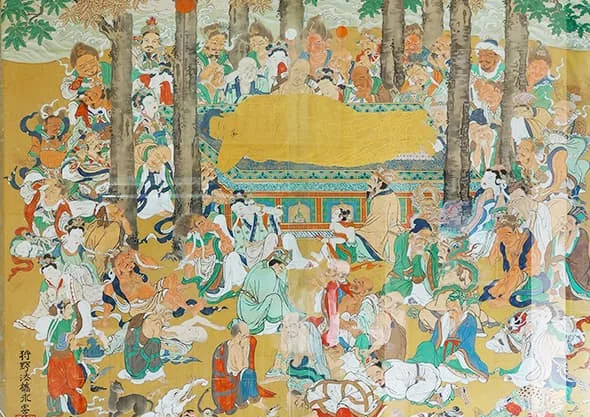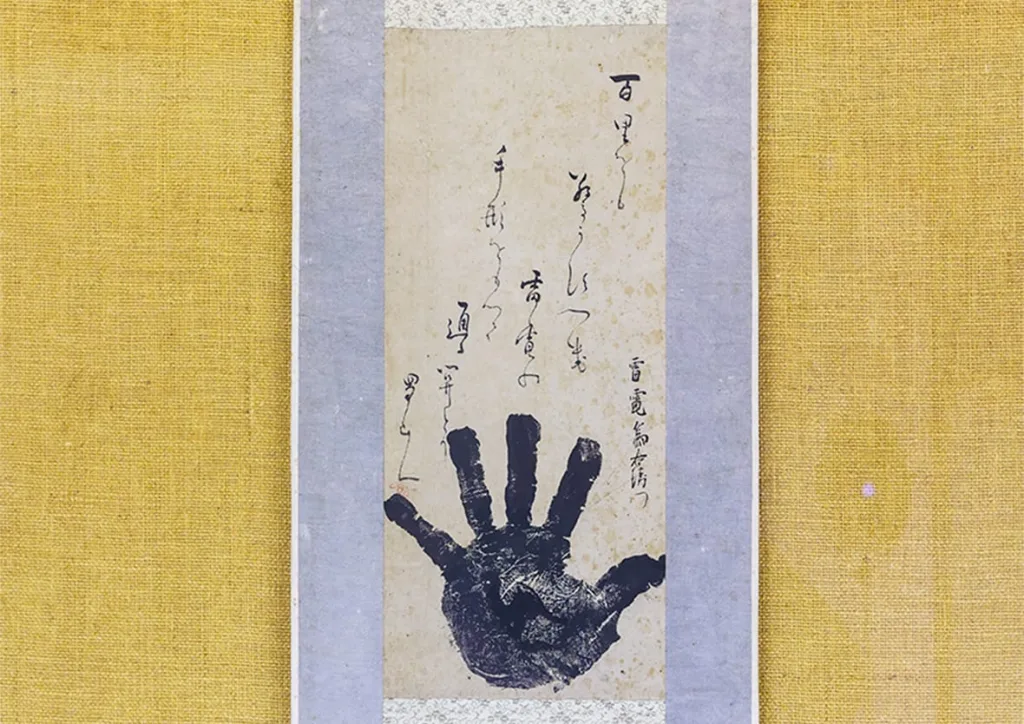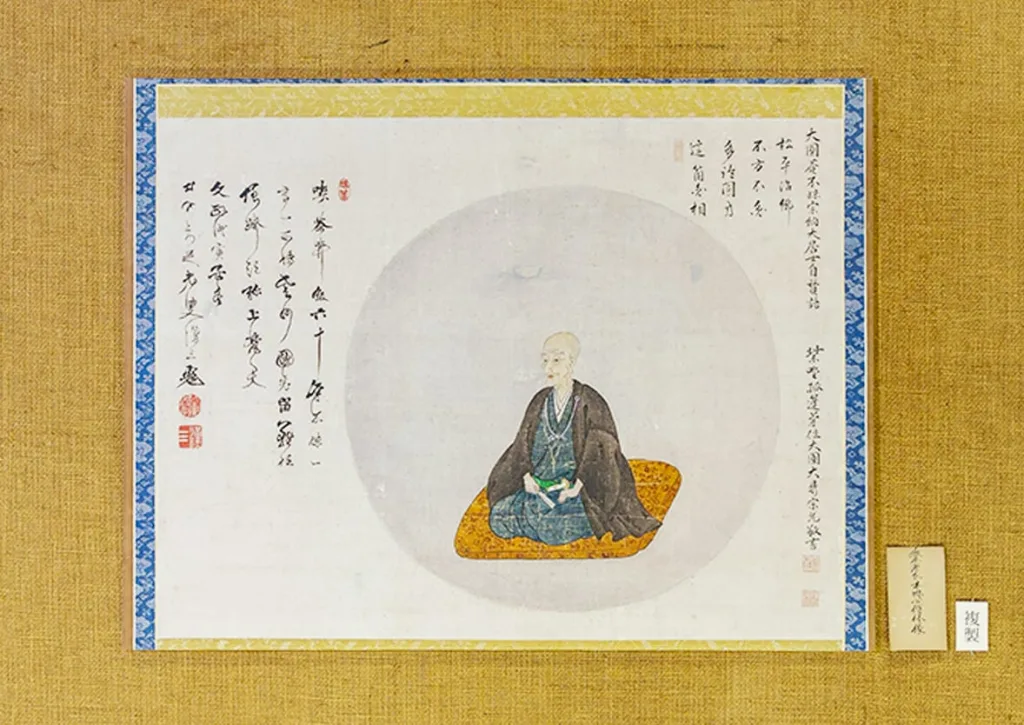Art and treasures
Top / About Gesshoji / Arts and Treasures
Cultural Treasures That Breathe with History
Gesshoji preserves a collection of precious artifacts once connected to the lords of the Matsue Domain, as well as exquisite artworks crafted by master artisans of the Edo period.
Encountering these cultural treasures offers a glimpse into the faith, aesthetics, and spirit of the people who lived in those times.

Color Painting on Silk: Manjushri on a Lion
This hanging scroll depicts Manjushri, the bodhisattva of wisdom, riding a powerful lion.
As a widely venerated symbol of wisdom, Manjushri’s lion mount represents the power of wisdom to overcome all obstacles.
The delicate brushwork and vibrant colors highlight the artist’s exceptional technique, making this an outstanding example of Edo-period Buddhist art.

Nehan-zu (Parinirvana Painting)
This Buddhist painting illustrates the scene of Shakyamuni Buddha’s passing into nirvana.
Disciples, devotees, and even animals are gathered around him, expressing deep sorrow and reverence.
The composition, color balance, and solemn atmosphere are remarkable, and the finely rendered facial expressions, clothing, and details reflect the artist’s devotion and refined skill.



Sixteen Arhats by Kano Suiun
A map of 16 Arahkans by Kano Nagaun, the official lacquer artist of Matsue Domain.
The Sixteen Arachts are Buddhist disciples who have played a role in conveying the teachings of Shakyamuni to the future, and are depicted with different expressions and figures.
In this picture, each screen is arranged with an arhat, with 16 framed framed faces in one place.
What's distinctive is that the background is unified with gold ground, and only the Arhats, their followers, and the rocks they sit on are painted.
This technique was also seen in the works of Kano Yasunobu, the master of Kano Nagaun, and is thought to have been referenced to the arhat drawings of the Nanshu painter Kim Dae-ye at the time.

Handprint of Raiden Tameemon
This hanging scroll features the handprint of Raiden Tameemon, a legendary sumo wrestler from the Edo period.
The scroll captures the scale and presence of his hand, offering a powerful sense of his physical dominance.

Portrait of Lord Fumai (Matsudaira Haruhide)
This portrait depicts Harusato Matsudaira, the seventh lord of the Matsue Domain, also known as Lord Fumai.
Famous as a tea master, he significantly influenced the development of tea culture, a legacy still preserved today through the Fumai-ryu school.
The painting reflects his dignified presence and conveys the spirit of tea that he so deeply valued.
